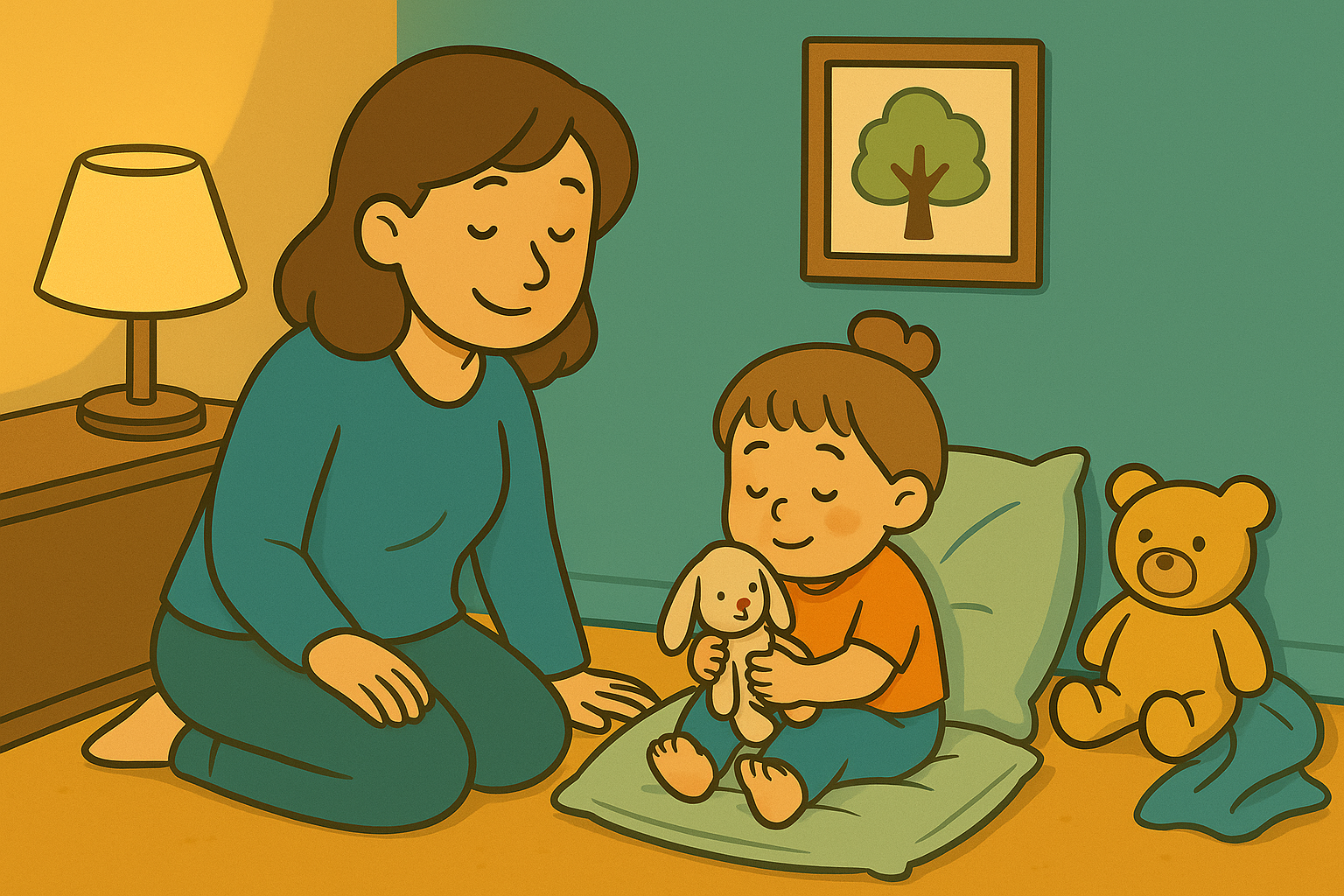Creating a Family “Calm Corner” Ritual
Creating a Family “Calm Corner” Ritual
Why Every Family Needs a Calm Corner
Modern family life is full of transitions, stimulation, and sudden demands. Children often experience feelings much bigger than their tools—and those emotions need a safe place to land. A calm corner isn’t a timeout space or punishment zone. It’s a regulation sanctuary—a spot in the home where emotions are welcomed, not judged.
A calm corner tells a child:
“This feeling can stay—but we can care for it together.”
It becomes a ritual of emotional safety and an anchor when the day begins to spill over.
What a Calm Corner Actually Is
A calm corner is not about creating silence—it’s about creating safety. It may include:
A small chair, bean bag, or cushions
Soft lighting or lamp
Cozy blanket
Familiar stuffed animal
Books or sensory tools
Soothing illustrations or nature pictures
It doesn’t need to be big. It just needs to be emotionally welcoming, similar to reset spaces explored in Family Reset Days for Overwhelmed Weeks.
Introducing the Calm Corner to Children
The way you introduce the space shapes how children understand it. Try phrases like:
“This is a spot for big feelings.”
“This is our care space—not a timeout space.”
“Whenever something feels too big, this place can help.”
“Adults use it too.” (VERY important!)
Children should never associate the corner with shame or exclusion—it is about support, not isolation.
What Goes Inside the Calm Corner
Think of the space as a menu of regulation tools:
Sensory Comfort — weighted pillow, textured fabrics
Breathing Prompts — posters or small cards
Emotional Cards — feelings wheel, drawing prompts
Quiet Activities — doodle pad, fidget toy, soft books
Calming Statements — “I am safe,” “This feeling will pass,” “I can take things slowly”
Keep materials simple and accessible. The less complex, the more effective.
Creating a Calm Corner Ritual
Children often need modeled behavior. Ritualizing the calm corner may look like:
Walk to the space together
Choose one object to hold
Take 2–3 slow breaths
Offer soft words:
“We can sit here until we feel steady again.”
“Our bodies can slow before our words do.”
Over time, the child may initiate the ritual independently—building confidence in their ability to cope.
Using Visual Cues for Safety
Gentle visuals strengthen emotional timeout alternatives. Try:
Breath-count picture cards
“I need space” hand signal chart
Nature images mounted at child-eye height
“Grounding steps” flow (1. breathe / 2. name feeling / 3. choose activity)
This mirrors strategies in Using Visual Cues for Routine Consistency, where visuals help the body and brain align.
When Should a Child Go to the Calm Corner?
Use it for:
Overstimulation
Loud environments
Frustration during tasks
Emotional overwhelm
Arguments or transitions
Homework fatigue
NOT for:
Punishment
Forced obedience
Shaming behavior
Emotional withdrawal
The child should know: “This is a place to feel better—not to disappear.”
What Adults Do During Calm Corner Time
Sometimes, quiet presence does more than instruction. Adults can:
Sit nearby without talking
Mirror slow breathing
Ask “Do you want space or company?”
Offer a gentle grounding object
Ask, “Would you like to leave when your body feels softer?”
Connection—not correction—is the goal here. This approach aligns with principles shared in How to Stay Calm When Routine Falls Apart, emphasizing safety over control.
Helping Children Return to the Day
Re-entry must be gentle—not abrupt. Ideas:
“Should we stretch before getting up?”
“What part of the day needs support now?”
“Do you want to walk or tiptoe back to our activity?”
“Let’s take our calm with us.”
Children learn that regulation is transferable—not location-dependent.
Evolving the Calm Corner Over Time
As children grow, so does emotional awareness. The calm corner may include:
Feelings journals
Soothing playlists
Mindful moment cards
Emotional vocabulary posters
Art invitations for expression
The goal is for the calm corner to slowly transform into internal regulation as children mature.
The Real Power of a Calm Corner
A calm corner doesn’t fix emotions—it holds them. It gives children permission to feel… without pressure to hurry. It teaches them that being overwhelmed doesn’t mean being alone. And that emotional waves lose power when we learn how to steady ourselves through them.
This content is for educational purposes and is not a substitute for professional medical or psychological advice.
Popular Parenting Articles


